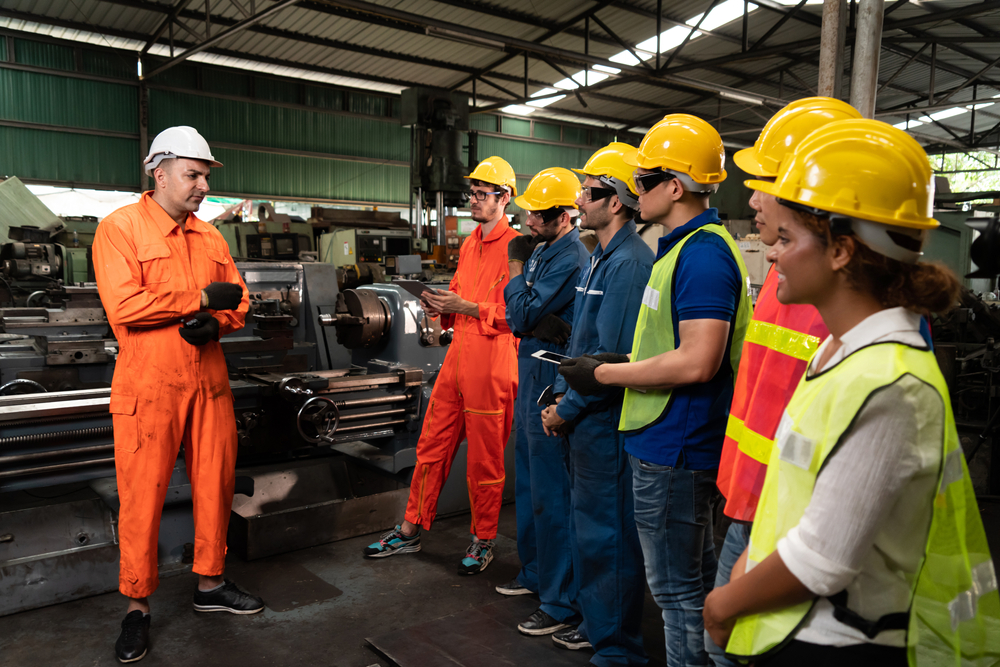Each year, millions of workplace incidents across the globe underscore a critical yet often overlooked aspect of business management: workplace safety. In Australia alone, SafeWork reports thousands of serious injury claims annually, highlighting a pressing need for stringent safety measures.
Why is workplace safety important? It safeguards and enhances our most valuable asset: our people. It goes beyond mere physical safeguards against accidents and injuries; it’s about creating an environment that fosters the mental well-being of employees and minimises health risks.
Advocating for a safety-first culture is not a regulatory burden… it should be a cornerstone of your operational ethos, and is crucial for the protection and growth of any organisation.
The importance of workplace safety
>Workplace safety isn’t just a set of guidelines or procedures; it’s a foundational principle that underpins the very essence of a thriving workplace.
Protects employees
At its core, the primary goal of workplace safety is to protect employees from injuries, illness, and potential fatalities. By identifying hazards and implementing preventative measures, businesses can significantly reduce the risk of accidents and ensure that employees work in a safe and secure environment.
This commitment to safety is essential for the physical and mental well-being of workers, safeguarding them against the immediate and long-term effects of workplace incidents.
Legal and regulatory compliance
Adhering to workplace safety standards is not optional; it’s a legal requirement. In WA, as in many other regions, businesses are obliged to meet safety regulations enforced by government bodies. Compliance with these laws not only helps avoid costly penalties and legal actions, but also establishes a framework for creating a safer work environment.
This legal adherence reflects your company’s commitment to the health and safety of your employees.
Minimises costs and losses
The financial implications of neglecting workplace safety are pretty big. Accidents and injuries lead to direct costs like medical expenses, compensation claims, and potentially increased insurance premiums.
Indirect costs can be even more substantial, including lost productivity, equipment damage, and reputational harm.
Investing in safety measures is not just ethically right — it’s economically smart. By proactively addressing potential hazards, you can avoid these financial pitfalls and contribute to a more sustainable operational model.
Boosts employee morale and productivity
A safe work environment is a happy work environment.
Knowing that their employer values their safety and well-being contributes significantly to employee morale, which then leads to better productivity, as employees are more engaged, motivated, and satisfied with their jobs.
This positive cycle fosters a culture of trust and respect, where safety becomes a shared responsibility among all members of the organisation.
Enhances company reputation
Your company’s commitment to workplace safety extends beyond your immediate employees; it resonates with clients, partners, and the public. Businesses known for their rigorous safety standards often enjoy a positive reputation, attracting customers and talent alike. This then becomes a competitive advantage, distinguishing your company in a crowded market as an employer of choice and a reliable partner.
Key elements of a safe workplace
Creating a safe workplace doesn’t happen overnight. It’s an ongoing process that requires commitment, diligence, and a proactive approach to identify and mitigate risks.
Risk assessment
The foundation of any effective workplace safety program is a thorough risk assessment. Identify potential hazards within your workplace, evaluate the likelihood of these incidents occurring, and understand the potential severity of their outcomes.
By systematically assessing risks, your business can prioritise safety measures and implement strategies to reduce or eliminate hazards. Make sure to regularly update the risk assessment to reflect changes in the workplace.
Training and education
Knowledge is power, especially when it comes to safety. Provide comprehensive training and education for all employees to equip them with the skills and understanding they need to work safely. This includes orientation of new hires, ongoing training for all staff, and specialised instruction for any employees working in higher-risk areas.
Effective training should cover the correct use of equipment, emergency procedures, and how to respond to potential hazards. Empowering employees through education fosters a culture of safety and accountability.
Emergency preparedness
Even with the best preventative measures, emergencies can still happen. Being prepared is key to minimising the impact of these emergencies.
Develop and implement emergency plans, including evacuation procedures, emergency contact information, and access to first aid. Regular drills and exercises help ensure that employees are familiar with these plans and can act swiftly in an emergency.
Make sure you have the right equipment, including fire extinguishers, emergency exits, and first aid kids readily available and in good condition.
Equipment and safety measures
The right tools and equipment are key to preventing workplace accidents. This can include anything from personal protective equipment (PPE) for employees to safety guards on machinery.
Make sure regular maintenance and safety checks are happening to ensure all equipment is in good working order and safe to use. Implementing ergonomic solutions can also prevent injuries related to strain and repetitive motion.
Continuous review and improvement
A safe workplace is not a static goal — it’s a dynamic process that requires continuous review and improvement.
Encourage feedback from employees, conduct regular safety audits, and stay informed about the latest safety standards and technology; these are all part of fostering a culture of safety.
A continuous improvement mindset ensures that safety practices evolve in line with new challenges and opportunities, keeping the workplace safe and compliant with the latest regulations and best practices.
Ensure you’re protected
Creating and maintaining a safe workplace is not just a legal requirement; it’s a critical investment in your business’s future. That’s why workplace health and safety insurance is imperative in protecting your business against unforeseen risks.
At GSK Insurance, we’re committed to safeguarding your investment with tailored insurance solutions that protect you and your employees from the unexpected. From comprehensive risk assessments to custom coverage plans, we ensure your dedication to a safe, productive workplace is matched with unwavering support and protection. Don’t wait for a wake-up call—secure your business’s future today and make safety your top priority.


